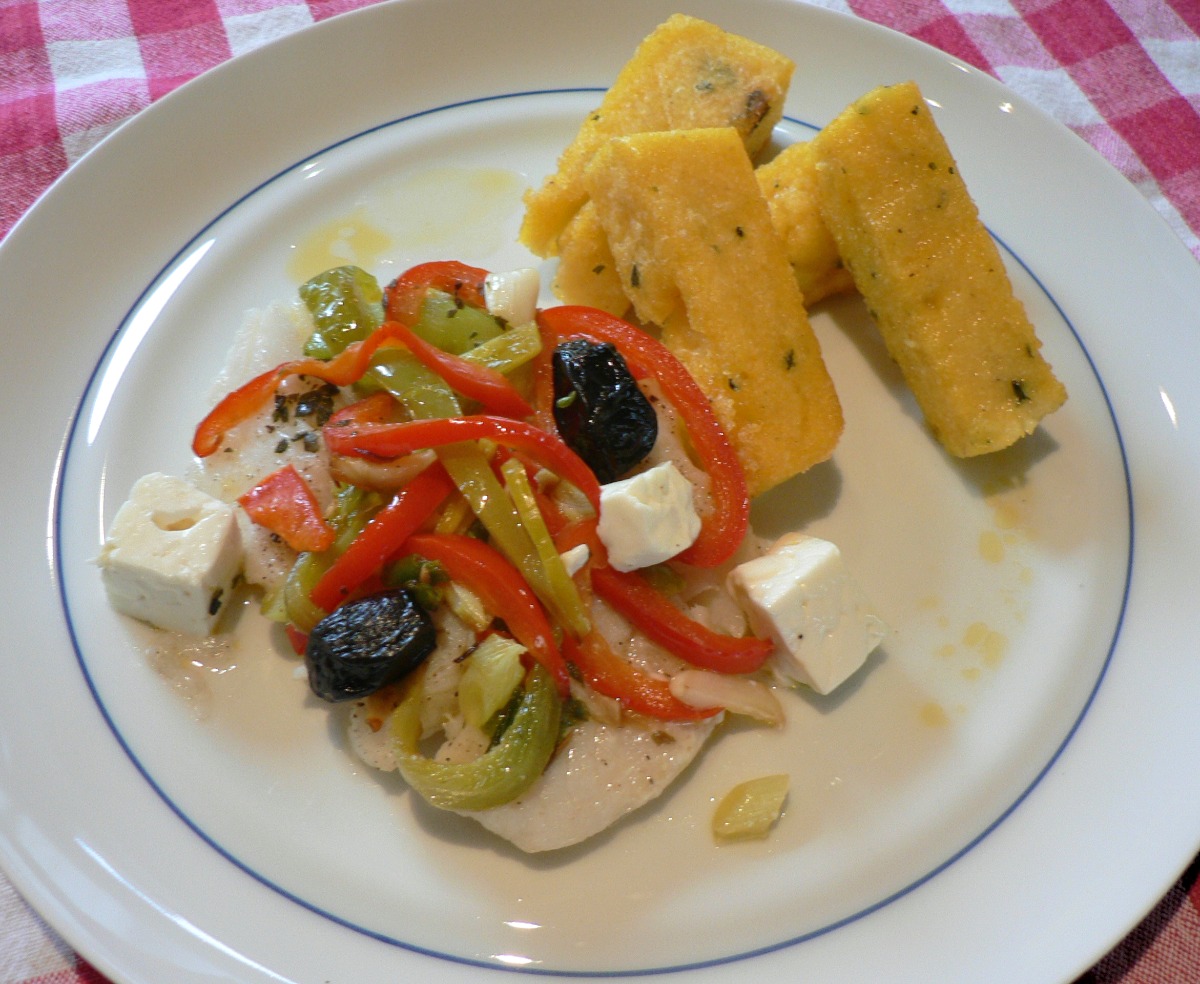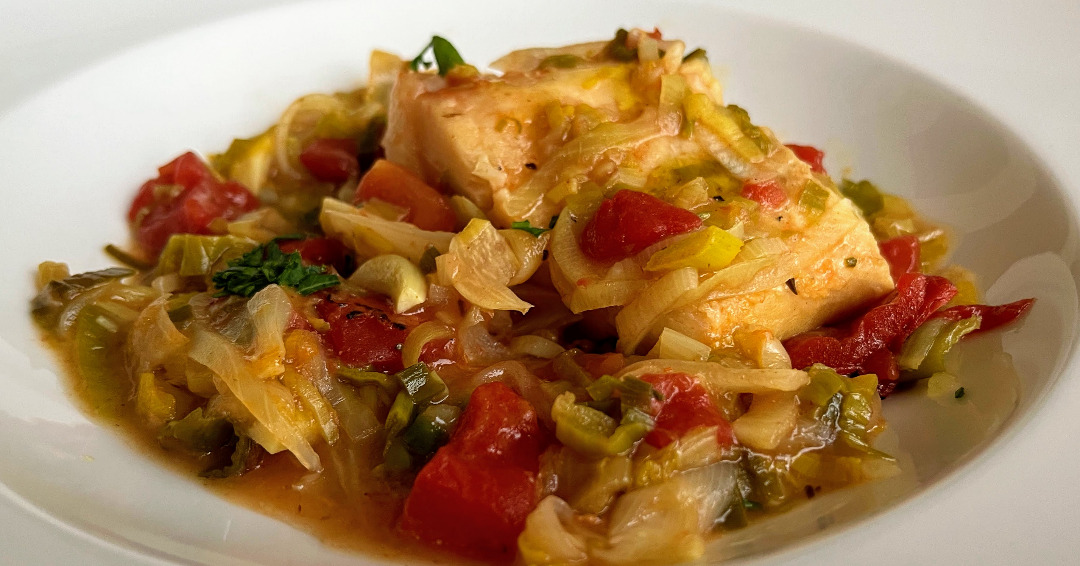Pasta con Baccalà e Finocchio, a venerable recipe from the Roman-Jewish cuisine. Salting changes the nature of the fish. Even after desalting, the fish has a firm and distinctive texture, a fortified and particularly tasty version of itself.
Servings: 4
Time: 30 minutes plus 24-48 hrs desalting in advance
Ingredients:
Poaching Stock:
- water
- 1 celery stick, roughly chopped
- 1 small carrot
- 1 small onion
- fennel top trimmings
- parsley stalks
- 5 black peppercorns
Pasta:
- 1 lb (450 g) salt cod, previously desalted
- 1 medium onion, thinly sliced
- 1 medium fennel, thinly sliced
- 4 Tbsp olive oil
- 14 oz (400 g) fettuccine or tagliatelle
- 4 oz grated Parmesan
- salt and pepper to taste
- 4 Tbsp chopped flat-leaf parsley, finely chopped
Bacalhau is a fish, traditionally codfish, that is cured by dry-salting it. It’s a very old and sustainable method to preserve fish. Mostly associated with the Portuguese cuisine it also has its place in Spain (bacalao), Southern France (morue salée) and Italy (baccalà and stoccafisso).
Desalting bacalhau is absolutely necessary. How long you soak depends on the thickness of the cut and how dry it is. In my opinion it is best to soak it for at least 24 hours, may be 48 hours, changing the water 2 – 3 times a day. Supermarkets in Portugal often sell “bacalhau demolhado”, the already-soaked and desalted bacalhau. However its best to do a testrun first. Cook a small piece of cod in barely simmering water for 10 minutes and then let it cool. It should be mildly saline. Keep in mind that pan frying or roasting bacalhau, might cause residual salt to concentrate and render a saltier taste to the finished dish.
Preparation:
Bring enough water to cover the salt cod and the poaching ingredients to a boil in a saucepan. Reduce the heat to a simmer and poach for about 20 minutes or until fish starts to flake. Once the fish is done, lift it out of the liquid with a slotted spoon. When the fish is cool enough to handle, flake it. Set aside on a plate. Save about 2 cups of the poaching water for later. Discard the vegetables.
While the fish is simmering, heat 2 tablespoons of olive oil over medium-high heat in a large frying pan. Add the onion and fennel and cook for about 10 minutes or until translucent. Season with freshly ground pepper.
Bring plenty of water to a boil for the pasta. Add a few drops of olive oil and some salt. Cook pasta according to package directions or “al dente”. Drain pasta and add it to the onion and fennel pan. Give it a stir then add the flaked salt cod, the Parmesan and parsley. Add some of the poaching water, little by little. You should aim for a creamy sauce. Taste for seasonings, if necessary. Toss it gently, drizzle with remaining olive oil and serve with Parmesan on the side.



